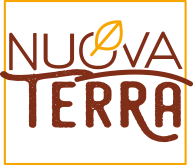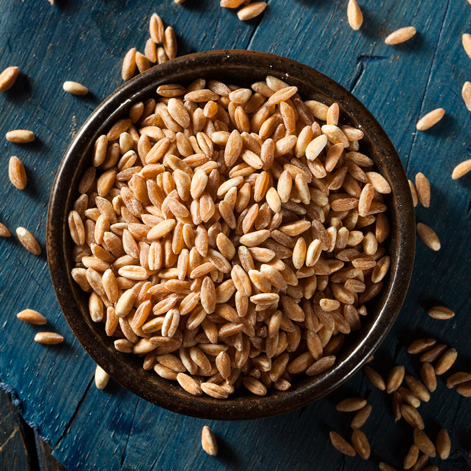Spelt is the oldest type of wheat cultivated by man, dating back to the Neolithic period. Spelt is often referred to as “clothed wheat” because after its threshing, the grain retains its glumeal casing. Therefore, before it can used as a foodstuff, it needs to be “de-clothed” by a hulling process that is carried out with specialized hulling equipment.
Origin
The origins of spelt are ancient, and some archaeological discoveries made in Mesopotamia, Egypt, and Syria confirm that its cultivation was practiced by man already in the 8th or 7th millennium B.C.
In Italy, instead, we have evidence for the use of spelt dating back to the period of Ancient Rome. In particular, in Roman cooking, spelt was frequently used in the preparation of Puls, a kind of polenta. There are many cultural references to spelt, for its use in the performance of sacred rites, as it was believed that the wheat itself was protected by the goddess Ceres.
Even in marriages, spelt played its role: in the rites of Roman weddings, in fact, husbands and wives would exchange spelt flatbreads, which they would then offer to Jupiter. The spelt focaccia, or flatbread, was a symbol of legal and patrimonial bonds, as well as a necessary means for ensuring a kind fate.
WHY IT SHOULD BE EATEN
In the same subspecies as common wheat, spelt in actuality contains more protein, and is more digestible. It is rich in important nutrients, such as magnesium and thiamine, in addition to containing minerals, fiber, and B vitamins that release energy slowly.
These characteristics make it an ideal energizing grain for athletes. Its hull, harder than that of wheat, protects the nutritive elements at its interior from external atmospheric agents, such as pollution and pesticides.

Spelt lends itself to numerous sweet and savory dishes. Today, there are many products derived from spelt on the market, items such as pastas, baked goods, and beers. It is a great substitute for rice, and as such can be added to hearty and light soups, cooked like risotto, or used as the basis for cold salads. Reduced into flour, it can be used alone, or mixed with other flours, to prepare bread, biscuits, and cakes.
There are mainly two types of spelt on the market: the decorticated kind, which is more whole in form and which requires soaking; and pearled spelt, where the outer hull is partially eliminated with a pearling process, and for this reason it is cooked without a presoaking.
Before you cook spelt, a thorough rinsing under running water is recommended. Spelt can be cooked like risotto or boiled in salted water for 20-30 minutes, if the spelt is pearled; or for about 1 hour – after 12 hours of soaking – if it has been hulled. If you prefer to use a pressure cooker, the pearled spelt cooks in 15 minutes, starting from the hissing sound.

The decortication of spelt grains yields the hull, which is used in the stuffing of pillows and mattresses. Spelt's husks are a natural antiperspirant and prevent mite infestations. Furthermore, the silicic acid contained in the husk functions as a natural painkiller.




 E-Shop
E-Shop

 Back
Back








